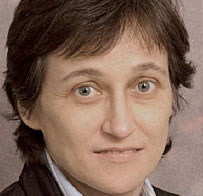Dominique Bonnet

After obtaining a PhD degree in the University of Paris VII in 1993, Dr D Bonnet joined the group of Prof. John Dick's laboratory in Toronto, Canada where she stayed as a research fellow for four years. She worked there on establishing an in vivo model to study human Acute Myeloid leukemia and identified and purified Leukemic Stem Cells. In 1998, she accepted a position as Group Leader at the Coriell Institute for Medical Research, Camden in New Jersey and became Assistant Professor, Dept. of Hematology/Oncology, University of Medicine and Dentistry of New Jersey, In 2001, she moved to London as a Tenure tracked group leader position at the Imperial Cancer Research Fund (ICRF). In 2002, the Institute changed is name to Cancer Research UK, London Research Institute. In 2006, she received her tenure position and is now Senior Group Leader. From September 2001 to October 2007, she had been appointed Adjunct Associate Professor, at University of Pennsylvania, School of Medicine, Hematology/Oncology Department, Philadelphia, USA. From August 2002 till now, she has an Honorary Professor position, at the University College of London, Biosciences Division. Her group is investigating the molecular program that regulate both normal and leukemic stem cells and how oncogenic events impede the normal hematopoietic stem cell development both directly and via the stem cell environment.
Cancer Stem Cells: Getting to the Root of Cancer.
An emerging concept in cancer biology is that a rare population of Cancer Stem Cells (CSC) exists among the heterogeneous cell mass that constitutes the tumour. Based on this notion, tumours are thought to be driven by a cellular subpopulation that retains key stem cell features. Yet, despite their critical importance, much remains to be learned about the developmental origin of cancer stem cells and the mechanisms responsible for their emergence in the course of the disease. We will focus more specifically on the blood-related cancer leukemia, which was the first disease where human CSCs, or leukemic stem cells (LSCs), were isolated. Acute myeloid leukaemia (AML) is a clonal disorder defined by the accumulation of abnormally differentiated myeloid blasts. Because leukemic blasts have very limited proliferative capacity, it is believed that leukemic clone is maintain by a rare population of leukemic stem cells (LSC) that have extensive proliferation and self-renewal capacities. Elucidating the nature of the target cell that undergoes leukemic transformation and characterising the LSC is essential for both the understanding of the leukemogenic process and for the design of effective therapies. The development of an in vivo model that replicates many aspects of human AML had provide a mean to identify LSCs. LSC is defined by the ability of that cell to initiate AML in NOD/SCID mice. This in vivo assay provides the foundation of an assay to define the biological and molecular properties of such LSCs. Despite the clear importance of the LSC in the genesis and perpetuation of leukemic disease, little is currently known about the biological and molecular properties that make LSCs distinct from normal haematopoietic stem cells.
Existing therapies have been developed largely against the bulk population. The lack of durable response in most cases, suggests that the treatment used may not effectively target the LSC population. Indeed, the failure of the current therapeutic regimens is likely related to the resistance and persistence of LSC. Thus, the identification of LSC has important implications for future research as well as for the development of novel therapies. Research focused on identifying and characterizing the rare cancer-initiating cells, should allow the identification of specific targets for CSCs, which if specific should provide effective cure and prevent disease relapse.





